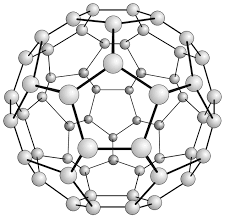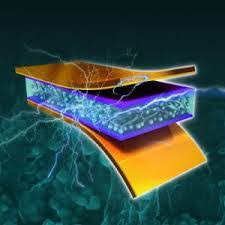Buckminsterfullerene Nano (Buckminsterfullerene) and Buckwheat Properties (Based on Nano-Microelectronics PhD) (Educational-Research Ph.D.)
Researcher and author: PhD student Afshin Rashid
Note: Bucklebars (C60) and fullerenes are among the many materials on which nano-materials are based. Unique structural and electronic properties, as well as their application in various fields such as electronic applications such as the manufacture of nano-electrodes Applied to specific electrical circuits, nano-photonics are specific to nano-solar cells and specific wavelength absorbers.
One of the most unique properties of fullerenes is their ability to preserve atoms or small molecules inside the carbon cage. Endothelial carbon cages (EFs) have been synthesized because of their inherent stability, their endohedral nanostructures containing one or two metal atoms such as Sc and La or containing a cluster nitride metal such as Sc3N . The importance of spatial and electronic parameters related to the cage structure such as fullerene is important in the factors that underlie the nanostructure and stability of these compounds. Optical properties, ionization and electron energies, and the relative stability of different florons are very effective in reproducing nanoelectronic devices.
Of the fullerene complexes, the structures of C60 and C70 are the most abundant. These amounts are 75% and 24%, respectively, and the remaining 1% are composed of C74 to C100 fullerenes.
The C60 case with Ih symmetry is about 7Å in diameter. The C70 molecule is similar to a rugby ball and its symmetry is usually flat, but in fullerenes the arrangement is 5h, its width is 7Å and its length is 10. Bonded carbon The carbon is removed from the plane so that three bonds form a shallow pyramid. The pressure resulting from this change in the C60 molecule produces about 400 mol / kcal of energy difference, which could be a compelling reason for the fullerene's reactivity to nanotubes.
Synthesis and Isolation of Nano Fullerenes and Buckwheels by Electric Discharge Method
These batches of nanostructures were first obtained by electric discharge. The exact mechanism for the formation of fullerenes is not known, but they appear to be produced during the creation of carbon plasma. Purification of fullerenes is usually accomplished by high performance column chromatography. Also on a smaller scale , the sublimation process can be used to produce high purity solvent-free fullerenes. Fullerenes are soot solids, such as darker and in some cases brilliant. The solubility of fullerenes in hydrocarbon solvents is usually negligible but high in aromatic nano-molecule solvents and soluble in nanostructures of larger fullerenes than smaller fullerenes.
Conclusion:
Buckwheat (C60) and fullerenes are among the materials upon which many nanomaterials are based. Unique structural and electronic properties, as well as their application in a variety of fields such as electronic applications such as the manufacture of working nano-electrodes. Gone are specific electrical circuits, nano-photonics in nano-solar cells, and specific nano-wavelength absorbers.
Author: Engineer Afshin Rashid
PhD student of Nano-Microelectronics at Islamic Azad University, Science and Research Branch, Tehran




